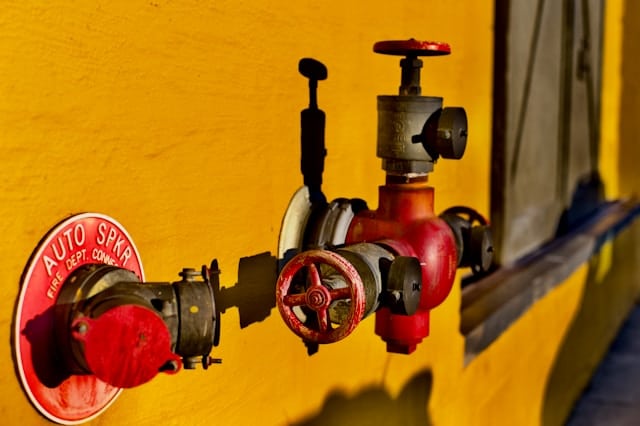How to Ensure Compliance with UK Fire Safety Regulations for Multifamily Housing?

Fire safety is a critical concern for any landlord or property manager. It is not only about complying with laws and regulations but also essential for ensuring the safety of the tenants. In the UK, fire safety is governed under the Regulatory Reform (Fire Safety) Order 2005, also known as the RRO. This legislation provides guidance on the necessary measures to ensure fire safety within residential properties, including multifamily housing such as flats and apartment buildings. In this article, we will discuss the pivotal steps landlords need to take to ensure their properties are in compliance with UK fire safety regulations.
Understanding the Fire Safety Regulations
Fire safety regulations in the UK are quite elaborate and require a comprehensive understanding. They entail a gamut of requirements, ranging from risk assessment to the installation of fire safety measures like doors and smoke alarms. But worry not, we will break down these regulations for you in a digestible manner.
Lire également : What Are the Best Practices for UK Real Estate Agents to Handle Client Data Protection?
Firstly, as a landlord, you are the ‘responsible person’ under the RRO. This means you have an obligation to ensure the safety of your tenants from fires. This responsibility includes conducting regular fire risk assessments, implementing necessary fire precautions, and maintaining fire safety measures in your properties.
One of the most essential aspects of fire safety in multifamily housing is to conduct regular fire risk assessments. The assessment aims to identify potential fire hazards, risks to people in case of a fire, and the effectiveness of existing fire safety measures. Your assessment should consider all potential sources of ignition, such as electrical devices and heating appliances, and all possible fuels like furniture and waste storage.
A lire également : What Are the Best Investment Options for Expats in the UK Real Estate Market?
Ensuring Fire Safety Measures
Having suitable fire safety measures in place is a significant aspect of complying with fire safety regulations. These measures can vary depending on the type and size of your property, but they commonly include fire doors, fire alarms, and clear escape routes.
Fire doors play a crucial role in preventing the spread of fire and smoke within a building. They give tenants more time to escape in case of a fire. UK fire regulations mandate that all doors leading to escape routes must be fire doors. These doors must be properly installed and maintained to ensure they function as intended.
Fire alarms are also vital for early detection of fires. The RRO requires landlords to install appropriate fire detection and warning systems in their properties. These can range from simple smoke alarms in individual flats to sophisticated fire alarm systems in larger buildings.
Lastly, tenants must have a clear and unobstructed escape route in case of a fire. This means you must ensure all hallways, stairways and exits are kept clear of obstructions at all times.
Compliance with Building Regulations
While ensuring fire safety measures is crucial, landlords also need to ensure their buildings comply with relevant building regulations. These regulations cover various aspects of a building’s design and construction to minimise the risk of a fire.
In particular, UK building regulations require landlords to provide adequate means of escape in case of a fire. This typically means providing a safe and clear escape route that leads directly to the outside. Furthermore, regulations also dictate that landlords provide fire separation between flats and other parts of the building to prevent fire spread.
Another key aspect of building regulations is the installation of suitable fire-resistant materials. This includes fire-resistant doors and walls, as well as flame-retardant materials in the construction and furnishing of the property.
Engaging with Tenants About Fire Safety
Engaging with your tenants about fire safety is a critical aspect of ensuring compliance with fire safety regulations. After all, it is your tenants who will need to react correctly in case of a fire.
You should provide your tenants with clear guidance on fire safety. This might involve instructions on what to do if there’s a fire, testing smoke alarms regularly, and keeping escape routes clear. It’s also wise to hold regular fire drills, so tenants understand how to react in case of a fire.
In addition, landlords should provide tenants with a copy of the fire risk assessment for their building. This allows tenants to understand the potential fire risks in their property and how these risks are being managed.
In conclusion, complying with UK fire safety regulations for multifamily housing is both a legal obligation and a moral duty for landlords. By understanding the regulations, ensuring proper fire safety measures, adhering to building regulations, and engaging with tenants about fire safety, landlords can ensure their properties are safe and compliant. Remember, safety should never be compromised, and prevention is always better than cure.
Conclusion
While this article provides a thorough overview of UK fire safety regulations for multifamily housing, it’s important to note that each property is unique and may require additional safety measures. Always consult with a fire safety professional to ensure you’re fully compliant with regulations and providing a safe environment for your tenants.
Additional Fire Safety Measures
In addition to the fire safety measures already discussed, there are several other precautions you can take to ensure compliance with UK fire safety regulations. These additional measures can go a long way in enhancing the safety of your tenants and your property.
A crucial part of fire safety is regular maintenance of all fire safety equipment. This includes ensuring that fire alarms and smoke detectors are in working condition, fire doors are functioning as they should, and all fire extinguishers are correctly placed and not expired. In addition to this, all electrical systems and appliances should be regularly inspected and certified by a professional electrician.
Carbon monoxide detectors are also essential, especially in properties with gas appliances. Carbon monoxide is a deadly, odorless gas, and a leak can lead to serious health issues or even death. Therefore, having detectors in place can give your tenants an early warning and possibly save lives.
Another crucial measure is to ensure that all furnishings comply with the UK’s Furniture and Furnishings (Fire Safety) Regulations. These regulations set levels of fire resistance for domestic upholstered furniture, furnishings and other products containing upholstery. Ensuring compliance with these regulations is a key step towards reducing fire risks in your properties.
Lastly, providing your tenants with a fire safety information pack can be beneficial. This pack can include fire safety advice, guidance on escape routes and instructions for what to do in the event of a fire. It’s a good practice to go through this pack with your tenants when they move in and remind them regularly of the contents.
The Role of Local Fire Rescue Service
Your local fire rescue service plays a significant role in ensuring your property’s fire safety. As a landlord, it is important to establish a good relationship with them. They can provide valuable advice and guidance on how to manage fire safety in your buildings.
In some cases, the fire rescue service may carry out an audit of your property. This can be an excellent opportunity to gain professional advice and ensure you’re complying with all regulations. The fire service will also respond to any fire incidents at your property, so having a good relationship with them can ensure a fast and efficient response.
It’s also worth noting that failure to comply with fire safety regulations can result in enforcement action by the fire rescue service. This can include enforcement notices requiring improvements, prohibition notices preventing the use of the building, and in severe cases, prosecution. Therefore, it’s in your best interest to work closely with your local fire rescue service to ensure your property meets all fire safety requirements.
Conclusion
Adhering to UK fire safety regulations for multifamily housing is of paramount importance for any landlord or property manager. Not only does it ensure you are fulfilling your legal obligations, but it also greatly improves the safety of your tenants. With proper understanding of the fire safety regulations, you can effectively implement fire safety measures, conduct regular risk assessments, comply with building regulations, and maintain good communication with your tenants about fire safety.
Remember, each property is unique and might require additional fire safety measures. Therefore, it’s advisable to regularly consult with a fire safety professional. By doing so, you ensure that your property is not only compliant with fire safety regulations but also a safe home for your tenants. After all, overlooking fire safety can result in devastating consequences. As the saying goes, "prevention is better than cure".
